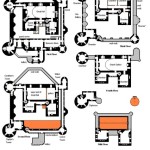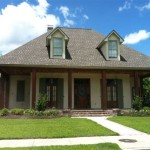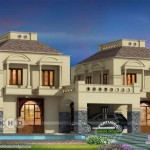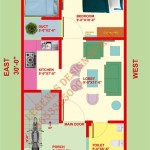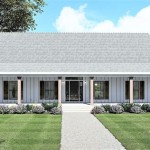House Plans With Separate Garages: Design Considerations and Advantages
Architectural design encompasses a wide array of choices, each influencing the functionality, aesthetics, and overall value of a residential property. One significant decision point revolves around the integration of a garage. While attached garages are common, house plans featuring separate garages offer distinct advantages and design possibilities. This article will explore the nuances of house plans with separate garages, detailing the benefits, design considerations, and potential drawbacks associated with this architectural approach.
The placement of the garage, detached from the main dwelling, fundamentally alters the property's layout and curb appeal. It allows for more flexibility in optimizing the living space and can enhance the visual separation between functional and residential zones. Such plans often cater to homeowners seeking specific lifestyle needs, such as extensive storage, dedicated workshops, or a desire for a more traditional aesthetic.
House plans with separate garages can range from simple, single-car structures to expansive outbuildings capable of housing multiple vehicles and recreational equipment. The architectural style of the garage can either complement the main house or serve as a contrasting, visually distinct element. The decision is dependent on the homeowner's preferences and the overall design intent of the property.
Advantages of Separate Garages
The implementation of a detached garage design offers a range of potential benefits, catering to diverse homeowner needs and preferences. These advantages can significantly impact the overall living experience and property value.
One prominent advantage is the reduced noise and odor intrusion into the main house. Attached garages can often transmit the sounds of vehicle operation, power tools, or workshop activities directly into living spaces. Similarly, fumes from vehicles or chemicals stored in the garage can permeate the home's air. A separate garage effectively isolates these disturbances, creating a quieter and fresher living environment. This is particularly beneficial for individuals sensitive to noise or those who use their garage for activities that generate significant noise or odors.
Another substantial benefit lies in increased design flexibility. With a separate garage, the house's footprint is not constrained by the need to accommodate an attached garage. This allows for more creative floor plans and a greater emphasis on the home's aesthetic appeal. Designers can optimize the layout for optimal natural light, views, and privacy, without being limited by the placement of the garage door and driveway. For instance, a house can be positioned to maximize its southern exposure for passive solar heating, while the garage can be placed on the north side to minimize its impact on the home's energy efficiency.
Furthermore, a detached garage can serve as a firebreak. In the event of a fire in the garage, the separation can prevent the fire from spreading to the main house, providing valuable time for evacuation and mitigating potential damage. This is a crucial safety consideration, especially in areas prone to wildfires or where flammable materials are stored in the garage. The space between the garage and the house acts as a buffer, slowing the fire's progress and potentially preventing a catastrophic loss.
Design Considerations for Separate Garages
Designing a house plan with a separate garage requires careful consideration of various factors to ensure functionality, aesthetics, and compliance with local building codes and regulations. Attention to detail is paramount to achieve a cohesive and harmonious design.
Site planning is a critical aspect of the design process. The placement of both the house and the garage must be carefully considered in relation to the property's topography, orientation, and existing landscaping. The driveway should be designed to provide easy access to both the house and the garage, while minimizing its visual impact on the overall landscape. Grading and drainage considerations are essential to prevent water from pooling around the structures and to ensure proper runoff. The location of utilities, such as electrical and water lines, must also be taken into account to ensure efficient and cost-effective installation.
The architectural style of the garage should complement the style of the main house. While a contrasting design can be visually appealing in certain situations, it is generally best to maintain a cohesive aesthetic to create a harmonious and unified property. The materials, colors, and detailing of the garage should be consistent with those of the house. For example, if the house features a traditional brick facade, the garage should also incorporate brick elements. Similarly, the roof pitch and style should match those of the house to create a unified visual appearance. Consideration must be given to window and door styles, as well as any decorative elements, to ensure a consistent design language.
Accessibility is another vital design consideration. The distance between the house and the garage should be minimized to facilitate easy access in all weather conditions. A covered walkway or breezeway can provide protection from rain and snow. If elderly or disabled individuals will be using the garage, accessibility features, such as ramps and wider doorways, should be incorporated into the design. The interior of the garage should also be designed to be easily navigable, with ample space for maneuvering vehicles and storing items. Proper lighting is essential to ensure safety and visibility, especially at night.
Potential Drawbacks of Separate Garages
While separate garages offer numerous advantages, potential drawbacks must also be considered to make informed decisions during the planning process. These disadvantages primarily relate to convenience, cost, and space utilization.
One of the primary drawbacks is the reduced convenience, especially during inclement weather. Having to walk outdoors to access the garage can be inconvenient in rain, snow, or extreme temperatures. This can be particularly challenging for individuals with mobility issues or those carrying groceries or other items. While a covered walkway can mitigate this issue to some extent, it still requires leaving the main house. The added distance between the house and the garage may also pose a security concern, requiring increased vigilance to ensure personal safety. Installing motion-sensor lights and security cameras can help to address this concern.
The construction cost of a separate garage is typically higher than that of an attached garage. This is due to the need for additional foundation work, exterior walls, and roofing. Separate utility connections for electricity and water may also be required, further increasing the cost. Moreover, the cost of landscaping and driveway paving may be higher due to the larger footprint of the separate structures. Therefore, it is important to carefully consider the budget implications before opting for a detached garage design. Obtaining multiple bids from contractors and carefully evaluating the scope of work can help to control costs.
Separate garages can also consume more land than attached garages. This can be a significant consideration on smaller properties where maximizing usable outdoor space is a priority. The footprint of the garage, combined with the driveway and surrounding landscaping, can reduce the amount of space available for gardens, patios, or other outdoor amenities. Therefore, it is important to carefully evaluate the property's size and layout before deciding on a separate garage design. In some cases, it may be possible to minimize the footprint of the garage by opting for a smaller structure or by incorporating vertical storage solutions.

Affordable Transitional Style House Plan 7789 Jetson

House Plans With Detached Garages From Don Gardner Donald A Interactive Llc

Contemporary 3 Bedroom Farmhouse With Loft House Plan 7495

House Plans With Detached Garage

Plan 62798dj Modern Farmhouse With Two Separate Garages

House Plans With Detached Garages From Don Gardner Donald A Interactive Llc

Plan 66390jmd One Level Coastal House With Split Garage Layout

Plan 500018vv Quintessential American Farmhouse With Detached Garage And Breezeway 3134 Sq Ft

New Popular House Plans With Detached Garages Dfd

Embrace House Plans With Detached Garages The Designers
Related Posts

